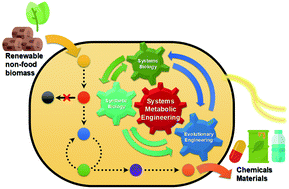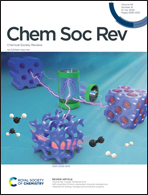Tools and strategies of systems metabolic engineering for the development of microbial cell factories for chemical production
Abstract
Sustainable production of chemicals from renewable non-food biomass has become a promising alternative to overcome environmental issues caused by our heavy dependence on fossil resources. Systems metabolic engineering, which integrates traditional metabolic engineering with systems biology, synthetic biology, and evolutionary engineering, is enabling the development of microbial cell factories capable of efficiently producing a myriad of chemicals and materials including biofuels, bulk and fine chemicals, polymers, amino acids, natural products and drugs. In this paper, many tools and strategies of systems metabolic engineering, including in silico genome-scale metabolic simulation, sophisticated enzyme engineering, optimal gene expression modulation, in vivo biosensors, de novo pathway design, and genomic engineering, employed for developing microbial cell factories are reviewed. Also, detailed procedures of systems metabolic engineering used to develop microbial strains producing chemicals and materials are showcased. Finally, future challenges and perspectives in further advancing systems metabolic engineering and establishing biorefineries are discussed.

- This article is part of the themed collections: Chemistry Biology Interface Primer and Biohybrid approaches for energy conversion


 Please wait while we load your content...
Please wait while we load your content...